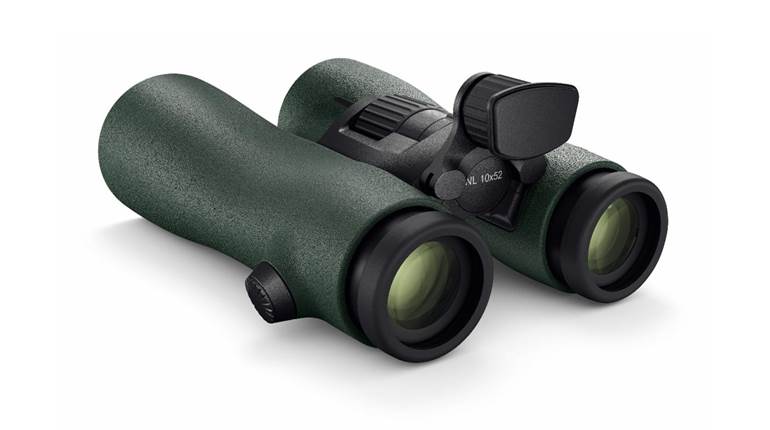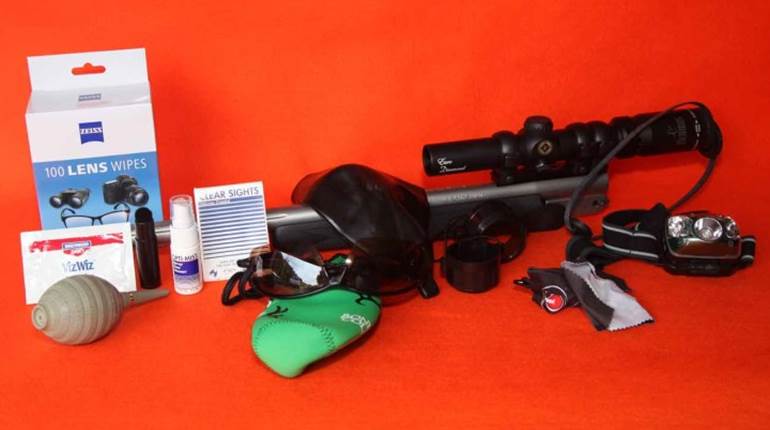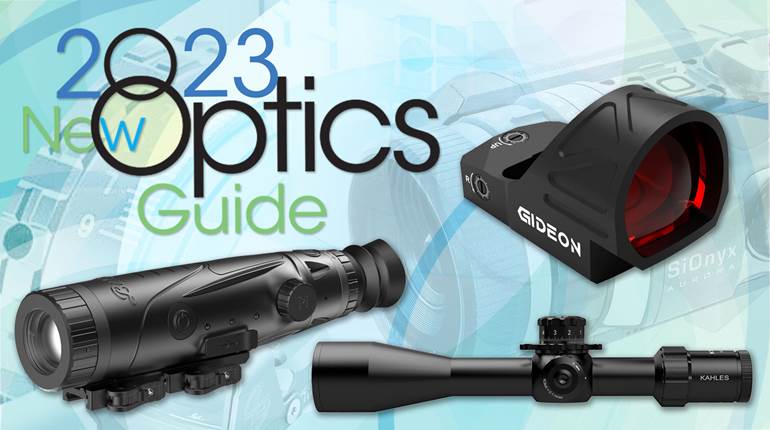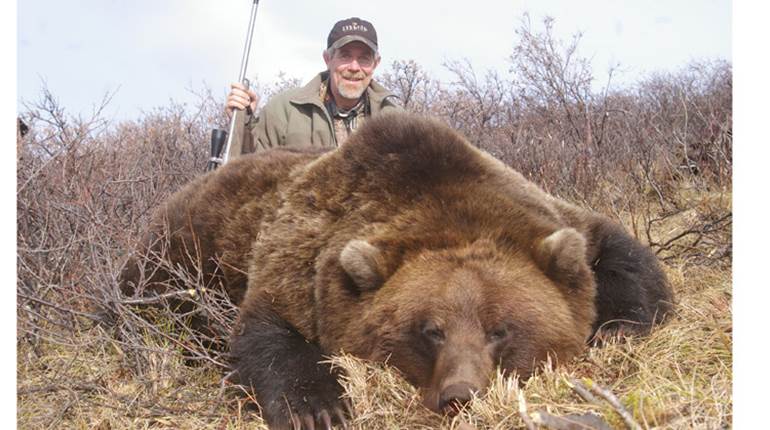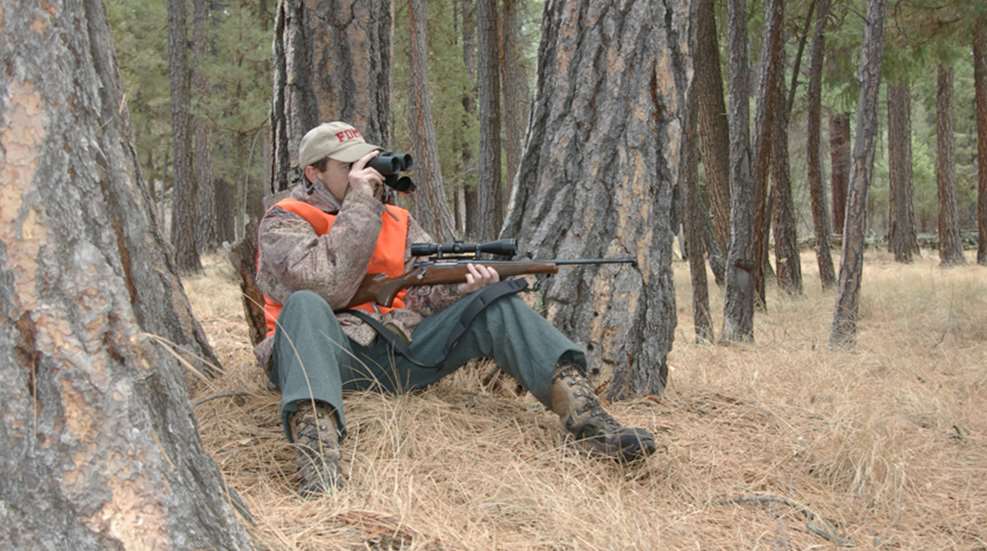
Elk move along the edges of the open and forest in the ashen light between when red squirrels start to chatter and dawn. The elk blend in with the bleached grass, sagebrush and trees and the difficulty of spotting two or 10 or 20 elk is compounded by miles of expanse. 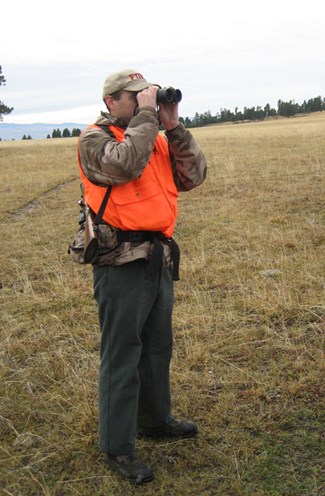
To distinguish elk and other game from their surroundings requires time with a binocular to the eyes. Knowing where to look and what to look for are essential. Public land elk mostly avoid the wide open and an occasional cursory scan of that country is sufficient. Elk stay more to the edges and thin timber while feeding the first and last of day. Shape more than color reveal elk. Horizontal lines should receive the most attention because they are often an elk’s back or single file band of traveling elk. A good chance a weathered stump is a rounded rump. A flicker of movement might be a raven or the head of a bull with its body obscured behind a juniper.
My son usually sees elk first when we are glassing. One reason is because Thomas believes elk are there, and he desperately wants to see elk, so his binocular is always at his eyes. Second, his eyes are 30 years younger than mine.
It’s said the pupils of young eyes dilate up to 8 mms in the dark. That 8 mm is of no consequence because big-game hunting is prohibited during the night. Pupils of young eyes measure a more realistic 6 mm during the first and last light of day. Pupils further constrict due to light flowing through a binocular to the eyes. The Cabela’s Euro HD 10x42mm binocular that Thomas currently hunts with provides a 4.2 mm exit pupil, which is slightly narrower than his eyes can accommodate in dim light. The 5.25 mm exit pupil of the Weaver 8x42 mm binocular he previously used furnished a slightly brighter view. However, hunters his age are inclined to choose increased power in binoculars, as well as in rifle scopes and rifle cartridges. He figures the closer look provided by the 10x magnification is a suitable trade for a slightly dimmer view.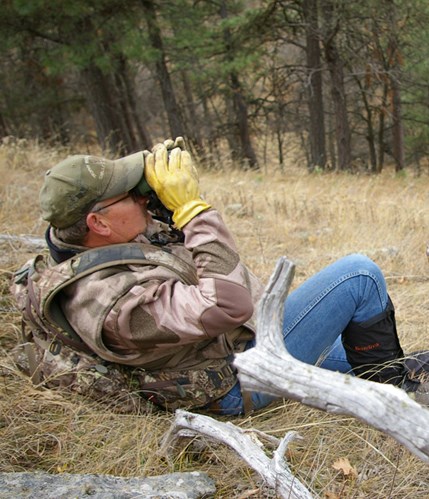
Standing is fine, though, for a quick look while hiking the country, but serious glassing for game requires taking a seat.
I started hunting with whatever binocular was left unattended in the house. Usually it was an inexpensive 7x35 mm or compact binocular that provided a view similar to looking through wax paper. The first year I was married my dear wife spent some major money to buy me a Bushnell Custom 7x35 mm. The binocular opened my eyes to the world. Its 5 mm exit pupil conveyed a bright view searching for game during the first and last of day and a sharp picture searching for timberline mule deer, distinguishing a rounded body from rocks and antlers from branches. The Custom never pulled on my eyes while glassing during the day. Some of that ease on the eyes came from the wide exit pupil that provided my pupils with some leeway so they did not have to concentrate on one spot.
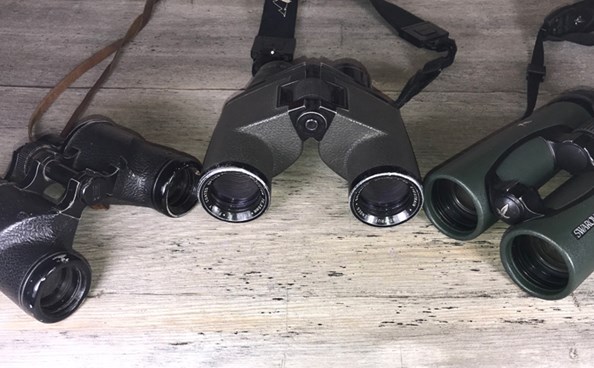
Everything else equal, the wider a binocular’s objective lens the brighter the view. From the left are binoculars with a 30mm, 35mm and 42mm objective.
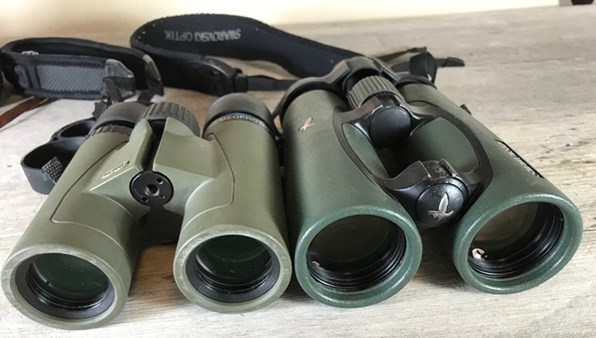
On the left is a binocular with a 32mm objective compared to a binocular with a 42mm objective.
Everything else equal, a larger objective lens will deliver more detail to the eye than a smaller objective lens. More important, though, a binocular’s ability to produce a sharp view is a function of glass quality and lens coatings.
Recently I compared the resolution of my 40-year-old Customs with several new binoculars of varying expense while looking at a 1951 USAF resolution test chart set 100 yards away in the evening’s dark shade of a north-facing hill. The test chart is usually comprised of a series of ever-smaller black and white bars. Instead the white bars were replaced with black bars set against gray bars to provide more of test of contrast and resolution.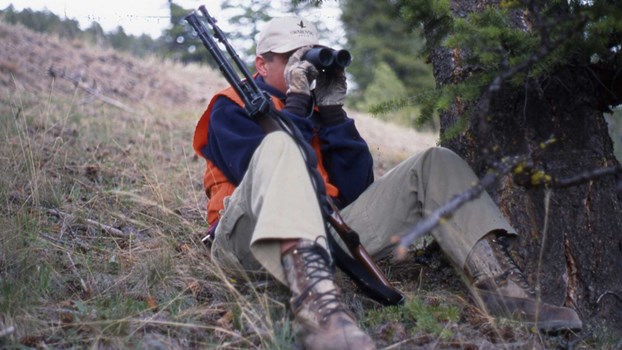
The ocular and objective lenses of the binoculars were cleaned before starting the tests. The lenses of each were dirty with dust, lint and cookie crumbs. A pine needle was even stuck to the edge of the objective of one binocular. The diopter adjustment on the glasses were checked for focus for my right eye. Binoculars without a lock on the diopter correction dial were slightly out of focus and required fine-tuning. One at a time, I placed a binocular on a large sandbag to steady it. I focused the binocular on the resolution chart, looked away for a few seconds and looked back to perfect focus.
The old 7x35 mm Custom tied for last place with a new Bushnell Engage 10x42mm in distinguishing elements on the resolution chart. A ray of light from the setting sun shined in my eyes, dimming the view a touch through both binoculars. Cupping my hands around my temples and eyepieces blocked the light, sharpening the view. The Engage sells for about $200. If the price my wife paid for the Custom binocular 40 years ago is converted into today’s dollars it would sell for twice the Engage’s price.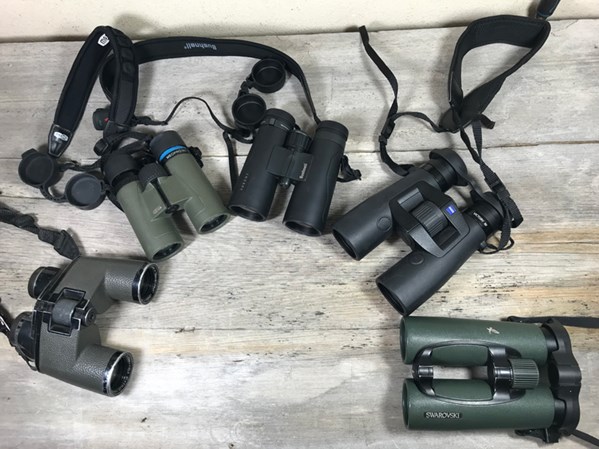
These four binoculars were tested for resolution. From the left, Bushnell Custom 7x35mm, Meopta 8x32mm, Bushnell Engage 10x42mm, Zeiss 10x42mm and Swarovski 10x42mm.
A Meopta Meopro HD 8x32mm objective lens is narrower than the old and new Bushnells and provides a 4mm exit pupil. Yet the Meopro distinguished two smaller elements than the Bushnells. So a binocular’s ability to produce a sharp view is at least somewhat a function of glass quality and lens coatings. That quality costs twice the price of the Engage.
A Swarovski EL 10x42 mm and Zeiss Victory 10x42 mm RF distinguished three smaller elements than the Meopta. The Swarovski and Zeiss (without the rangefinder) quality arrive at a cost about seven times that of the Meopta.
I stood and held the Swarovski and looked at the chart. Fine image quality declined significantly. It decayed in all five binoculars. Leaning against a post supported me and a binocular and improved sharpness. But some shake remained. A binocular must be held as steady as feasible in order to see the details we spent money for in the first place.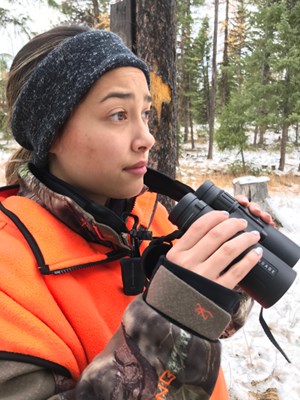
Ann Marie Haviland is on the hunt for white-tailed-deer. Her Bushnell Engage 10x42 binocular is just as important as her rifle
Still-hunting through the forest it’s difficult to see much past 75 yards. Among that blend of branches, leaves and tree trucks are game. The view steadies leaning against a tree or kneeling with your binocular supported by your elbows on the knees. Depth of focus is rather limited at these short distances with more than an eight-power glass, so studying the forest at one distance and refocusing at increasing distances in steps allows separating a whitetail’s antler from branches and elk’s back from a deadfall.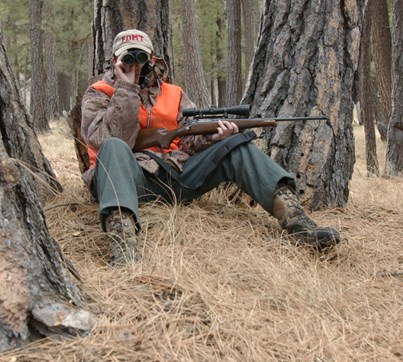
There’s a wide reach of ground in the open and you’ll be there longer than you think to cover it so take a seat with your back supported by a tree or rock. Shooting sticks or grasping a rifle barrel with one hand (no cartridge in the chamber, of course) steady a binocular. In late November the wind on ridges is cutting cold, so I often lay down to cut the wind some and also support my body. Search and search and most of what you see will be a black stump that looks like a bear or gray rock like a mule deer. Maybe later than sooner, though, your binocular will show what you seek and it will be everything you ever wanted to see.












